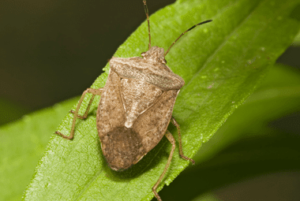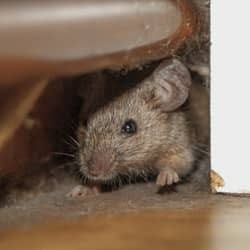Last week, I was getting Christmas decorations down from the attic when I came across a pesky critter that commonly makes its home in stored items, particularly in the attic. The offending invader was a silverfish, and I didn’t feel the need to extend Christmas cheer to it. It got squished before it ever left the attic, but seeing it reminded me that many homeowners and business owners in the area could be encountering silverfish at this time of year and may need to know what to do about them.
I did a quick online search to see what people were saying about silverfish, and I was quite surprised by the result. A lot of people were posting pictures of silverfish that weren’t silverfish at all. So, to set the record straight, please view this picture for a clear example of a silverfish. They are sometimes called bristletails (as are their cousins, firebrats, who live in climates over 90° F). When viewed from above, they have the shape of a thin tear drop with three spikes coming out of their back end. Their color can range from pail silver to a dark gray, and they can grow to be about half an inch long. Most of the classification errors I found were made by people who thought that house centipedes were silverfish (you remember those monsters, right?). If I had my preference, I’d choose silverfish over centipedes any day, though it’s best to avoid them both in your home.
You won’t be at all surprised to find that silverfish like humidity and moisture; most pests do. However, unlike camel crickets, silverfish prefer warm humid places. Their ideal temperature is about 70° F, which, coincidentally, is a fairly ideal temperature for us as well. You may find camel crickets cheerfully living in your crawl space, but silverfish would much rather live in the house. The attic is often a good choice for them because it is not dehumidified by the AC in the summer or the heat in the winter. Unfortunately, these pests are nocturnal. Homeowners may not know that silverfish are there until the problem is already quite bad. That trouble is compounded for business owners since commercial buildings are rarely occupied after dark.
Silverfish won’t bite you, but they can do some damage to items in your home. They like to eat starchy substances and, unfortunately, papers are a common meal for them. That’s another reason why they like the attic; cardboard is attractive to them. I have heard of silverfish feeding on stored papers, books, or even old photos. They can damage your possessions posthumously as well because their silver scales can leave a messy smear if you squish them.
In many cases, dehumidification can go a long way toward rousting the silverfish out of your home. HVAC units can leave houses pretty dry, particularly in the winter, and that will make these bristletails very uncomfortable. If you know you have a very damp attic, consider having a dehumidifier installed there if you’re having a major silverfish problem. That will help protect any stored items you have from moisture and will help to eliminate your silverfish issue. There are also several useful baits available that can be left in unexposed areas for the silverfish to consume. Remember to read the label if you’re going to try baits on your own. The label will tell you if a product can be used in a home or attic so you don’t have to wonder if you’re using the right thing.
At Russell’s Pest Control, we believe in a multi-faceted approach to controlling problem pests. We can inspect and inform you about any moisture issues that we find. We can also incorporate baits, sticky pads, and liquid treatments that can help to eliminate pests that may already be in the house. If you have questions, you can give us a call or visit our contact page.
Silverfish In The Attic in Knoxville TN
Serving East Tennessee since 1971


